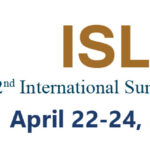
Health care organizations partner to understand why routine dental care is inaccessible to a significant portion of Brevard residents
Recent data collected from area health care organizations concerned about restricted community access to oral care services for residents returned dismal results.
The Brevard Healthcare Forum – in a collaborative partnership with the Community Health Partnership at Parrish Medical Center (PMC), Space Coast Volunteers in Medicine (SCVIM), the Department of Health, Brevard Health Alliance and Space Coast Health Foundation – has interviewed dentists, patients, case managers and volunteers in an effort to understand why timely access to oral health services is not available for a large majority of residents here.
This concern is backed by a 2010 report issued by the Florida Public Health Institute, which reported that a significant proportion of Brevard residents are unable to access routine dental care. Of the county’s 298 licensed dentists, only 13 accept Medicaid for an eligible base of 38,300 patients. It is notable that less than 2,000 of these patients actually are receiving dental services through these dentists.
The lack of access means hospital ERs are jammed with patients seeking care for abscessed or rotted teeth. In 2010, there were 3,500 visits to Brevard ERs at a cost of $1.9 million.
The irony is that ER doctors will not perform tooth extractions due the complicated nature of oral surgery. So patients who present with oral drama are often routed back into the community, where they cannot find timely care and must continue to suffer excruciating pain.
 “We make every effort to find someone who can help them (with oral emergencies),” says Chris McAlpine, vice president for PMC.
“We make every effort to find someone who can help them (with oral emergencies),” says Chris McAlpine, vice president for PMC.
But, Khalid A. Siddiqui, M.D., director of PMC’s Emergency Department, says because volunteer dentists are few and far between and because working dentists are increasingly not accepting Medicaid, most patients are referred to the Department of Health, where they are placed on a waiting list for care.
With almost 300 dentists in the county, it seems that more concentrated volunteer efforts could help whittle down the four- to six-month waiting list for adults. But, among providers, there are dissenting opinions on this.
VOLUNTEERISM: THE STARTING POINT
Health care professionals, such as McAlpine and Paul Ringenberger, executive director of SCVIM believe that recruiting volunteer dentists to help ease the amount of time a patient has to wait to access care is the easiest starting point.
But, misconceptions among dentists about requirements for volunteerism abound. “Malpractice concerns and licensure issues were most commonly cited,” says McAlpine.
Working dentists who volunteer with the Brevard County Health Department and SCVIM are protected from malpractice suits due to a provision in state law called Sovereign Immunity, which is granted through the local health department. This means that the state will protect the provider and “cover the costs of a medical malpractice suit brought against a provider” entrusted with Sovereign Immunity, “and that any judgments rendered are not reportable against a provider’s professional record,” says McAlpine.
And, once a Sovereign Immunity agreement has been signed and accepted by the state, the status is portable – meaning dentists can provide volunteer care in the comfort of their own offices, if they choose.
Providers at Brevard Health Alliance are afforded similar, though more secure, protection through the Federal Tort Claim Act (of 1946), says Chief Executive Officer Lisa Gurri.
So, why aren’t more dentists volunteering? A few who were interviewed at a gathering hosted by PMC cited outdated equipment in clinics, non-compliance in patients on follow-up protocols and the frustration with only being able to extract teeth rather than provide more comprehensive care.
Jerry Antoon, D.M.D., a periodontist on Merritt Island who has volunteered time to the Department of Health’s dental program, sympathizes but argues that more than volunteerism is needed to address this problem.
One major issue is reimbursement. Medicaid reimbursements often do not cover the cost of treatment, so many dentists are not providing services for these patients, he explains. Reimbursement levels for Medicaid dental services in Florida is the lowest of all states.
MORE VIABLE, WORKABLE SOLUTIONS
Volunteerism is important, Dr. Antoon adds, but so are a number of other factors which are detailed in a white paper titled “Improving Access to Oral Health Care in Florida,” provided by the Florida Dental Association (FDA).
Recommendations for improving access to care by the FDA include:
- Preventive measures (such as increasing access to fluoridated water, especially for children)
- Improving oral health literacy (such as targeted campaigns for parents and children)
- Improving the safety net (such as increasing reimbursement rates)
- Expanding current opportunities within current dental workforce (such as integrating services within the dental team)
- Improving advocacy and collaboration (such as collaborative efforts with internal and external stakeholders to create advocacy strategies)
- Expand volunteerism and innovative outreach
The Space Coast Health Foundation, which has delved deep into the oral health access issue and is committed to finding – and funding – solutions to the problem, is assembling a task force to further research the issues and formulate viable solutions for the community. “The group will consist of cross-sector stakeholders, including health care and safety-net providers and consumers who will work together to formulate effective solutions to our pressing dental issues,” says Johnette Gindling, executive director.
The Community Health Partnership, housed at PMC, is also committed to workable solutions for the problem and has taken over the Dental Access Subcommittee for the Brevard Healthcare Forum in an effort to consolidate efforts and identify efforts that will avoid duplication, leverage community resources and gather all interested stakeholders.
Dr. Antoon and other dentists generally agree that the only way to properly address the needs are through a multi-pronged approach that combines cross-sector collaboration, health literacy campaigns and by teaching preventive measures.
This article was written by Shawna S. Kelsch, chair, Brevard Healthcare Forum. For more information, or to contact any of the organizations cited in this article, please visit www.SpaceCoastLivingHealth.com.
BREAKOUT 1:
PRIMARY ORAL HEALTH CHALLENGES
As identified by the Florida Oral Health Coalition
- A significant proportion of county residents are unable to access routine dental care.
- The county has not yet maximized access to evidence-based preventive services such as community water fluoridation and clinical preventive services such as dental sealants and topically applied fluorides. Currently, 96.9 percent of county residents on community water systems receive fluoridated water.
- The only dental care option for many is the hospital ER.
- Despite a 2011 increase, Medicaid reimbursement rates remain too low for a private-practice dentist to offset the cost of care.
- In 2010, 3,375 Brevard County residents sought ER treatment for dental conditions typically considered avoidable with appropriate preventative and restorative care, incurring total charges of $1,921,749. Of that total, $608,704 was paid by Florida Medicaid.
For more information, visit www.OralHealthFlorida.com or www.FLPHI.org.











